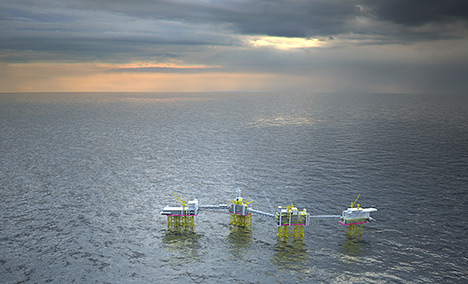 Statoil and the partners in the Johan Sverdrup field have decided on a concept for the first development phase. The partners have agreed on a field center consisting of four installations and power from shore.
Statoil and the partners in the Johan Sverdrup field have decided on a concept for the first development phase. The partners have agreed on a field center consisting of four installations and power from shore.
Johan Sverdrup is among the largest oil fields on the Norwegian shelf, and will at peak contribute with 25% of the production from the Norwegian shelf. The giant field is expected to start production in late 2019. The field lifetime will be 50 years, with an anticipated plateau production of 550,000-650,000 barrels of oil equivalent/day (boe/d) field capacity (Statoil share ~40%).
The partners have decided on power from shore for the Johan Sverdrup field in the first phase, which will reduce total CO2 emissions from the Utsira High area by 60-70%.
"This is historic. We have not made a concept selection for a field this size since the 1980s," says Arne Sigve Nylund, executive vice president for development and production in Norway.
Establishing a field center
The field will be developed in multiple phases. The design capacity of the first phase is 315,000 barrels of oil equivalents per day field capacity (Statoil share ~40%) with an expected production between 315,000 and 380,000 boe/d in the early phase. Pre-drilling of wells will contribute to a rapid production ramp-up.
"The ambition is a recovery rate of 70% for the full field," says Øivind Reinertsen, senior vice president of the Johan Sverdrup field.
Investments in the first phase are estimated at between NOK 100-120 billion. These include the field center, wells, export solutions for oil and gas, and power supply. The estimates also include contingencies and provisions for market adjustments. In addition, the first phase will facilitate measures for improved oil recovery.
The partners are working continuously to lower the investment level for the first phase.
The field center in the first phase comprises a process platform, drilling platform, riser platform and living quarter, and has been designed so as to facilitate future development. The installations have steel jackets that are linked by bridges. The water depth is approximately 120 meters in the area.
Power from shore
Johan Sverdrup phase 1 will be supplied with power from shore with a transformer on Kårstø delivering direct current to the riser platform, ensuring an estimated 80 MW.
As part of the plan for development and operations, scheduled to be delivered in early 2015, alternative power solutions for the future phases will be described. One of the alternatives will be power from shore to the whole Utsira High area based on updated power requirements.
"This alternative, if selected, has the potential to capture more than 90% of the total CO2 emissions from this area," says Reinertsen.
Export solutions
The export solution for oil and gas from Johan Sverdrup is based on transport to shore through dedicated pipelines. The oil will be transported to the Mongstad terminal in Hordaland county.
The gas will be transported via Statpipe to Kårstø in Rogaland county for processing and transport onward.
"Johan Sverdrup is the result of 40 years of development and activities on the Norwegian shelf. This is the opportunity to advance history several steps," summarizes Nylund.
Facts about the Johan Sverdrup field (PL 265, PL 501 and PL502)
• Johan Sverdrup is an oil field.
• Johan Sverdrup consists of a combined discovery which makes up one field.
• Location: Utsira High in the North Sea, 140 kilometers west from Stavanger.
• The water depth is 120 meters, and the reservoir depth is 1,900 meters.
• We expect approval of the plan for development and operation (PDO) during the Norwegian Parliament's (Stortinget) spring session in 2015.
• Production start is expected at the end of 2019.
• The field has a production horizon beyond 2050.
• The first phase is the establishment of a field center consisting of four platforms.
• Oil transport via pipeline to the Mongstad terminal in Hordaland, and gas transport to Statpipe, and then further to the Kårstø processing plant in northern Rogaland.
• The field will receive power from land.
Partners:
PL 501: Lundin Norway (operator - 40%), Statoil (40%), Maersk Oil (20%)
PL 265: Statoil (operator - 40%), Petoro (30%), Det norske oljeselskap (20%), Lundin Norway (10%)
PL 502: Statoil (operator – 44.44%), Petoro (33.33%), Det norske oljeselskap (22.22%)
.


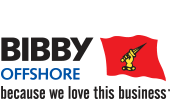 Bibby Offshore's
Bibby Offshore's The Obama administration is expected to move closer this week to allowing new exploration for oil and natural gas in the Atlantic Outer Continental Shelf (OCS).
The Obama administration is expected to move closer this week to allowing new exploration for oil and natural gas in the Atlantic Outer Continental Shelf (OCS).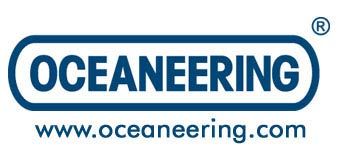 Oceaneering International, Inc.
Oceaneering International, Inc.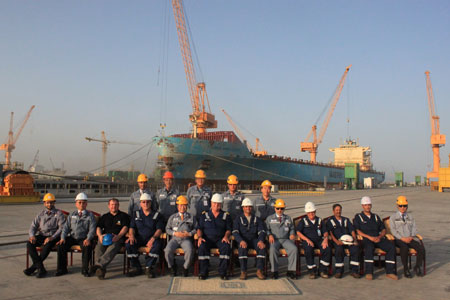
 Niche Products Ltd
Niche Products Ltd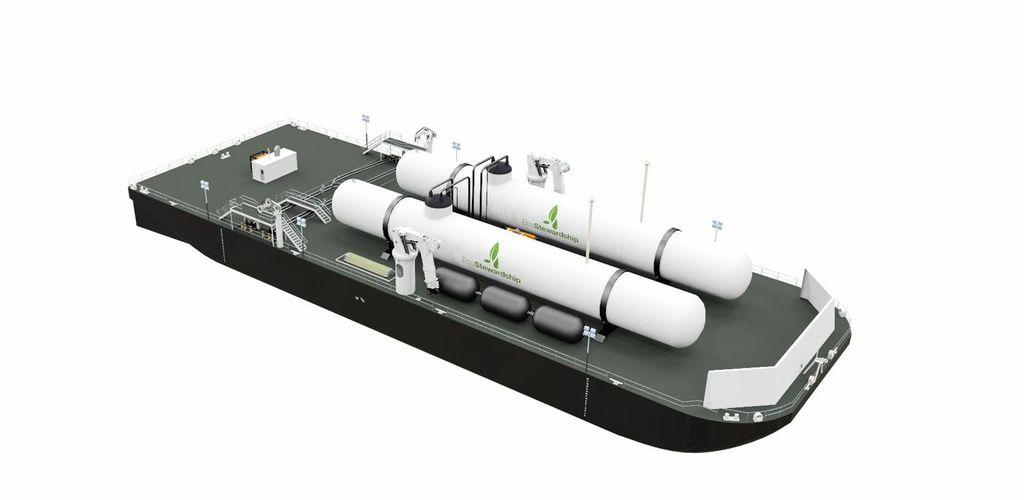 Jensen Maritime
Jensen Maritime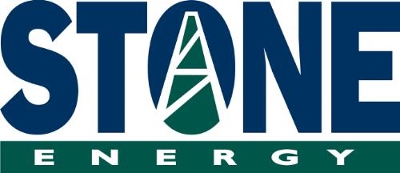 Stone Energy Corporation
Stone Energy Corporation 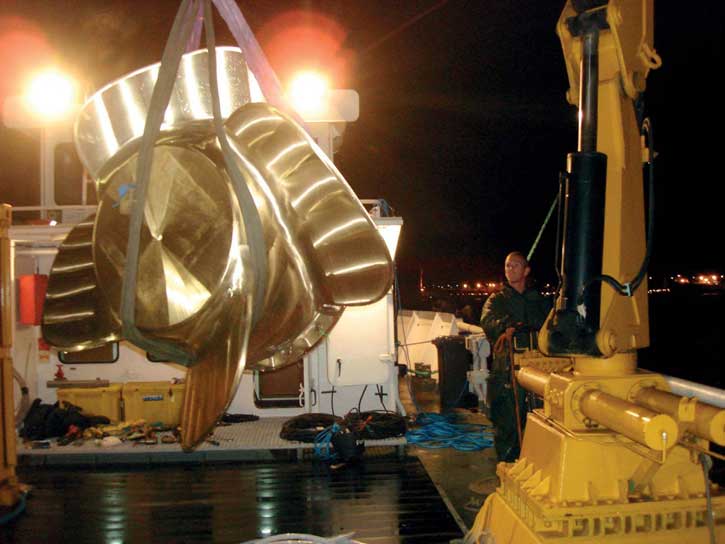 Recently
Recently 
 NYC-based
NYC-based 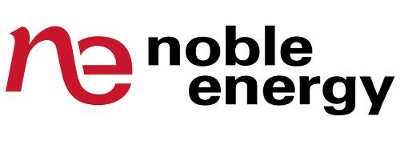
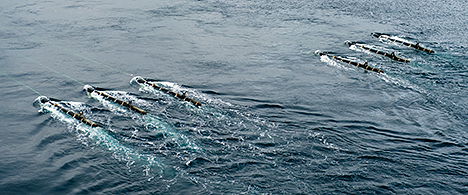 Illustration of seismic acquisition. (Photo: Ole Jørgen Bratland)
Illustration of seismic acquisition. (Photo: Ole Jørgen Bratland) Net income was 11% up on 2012 due to diesel (20%) and gasoline (11%) price increases in 2013, increased production of oil products, cost optimization, gains from the sale of assets, lower write-offs for dry wells and lower foreign exchange impact due to hedge accounting. Adjusted EBITDA totaled R$ 62.967 billion, up 18% on 2012.
Net income was 11% up on 2012 due to diesel (20%) and gasoline (11%) price increases in 2013, increased production of oil products, cost optimization, gains from the sale of assets, lower write-offs for dry wells and lower foreign exchange impact due to hedge accounting. Adjusted EBITDA totaled R$ 62.967 billion, up 18% on 2012.
